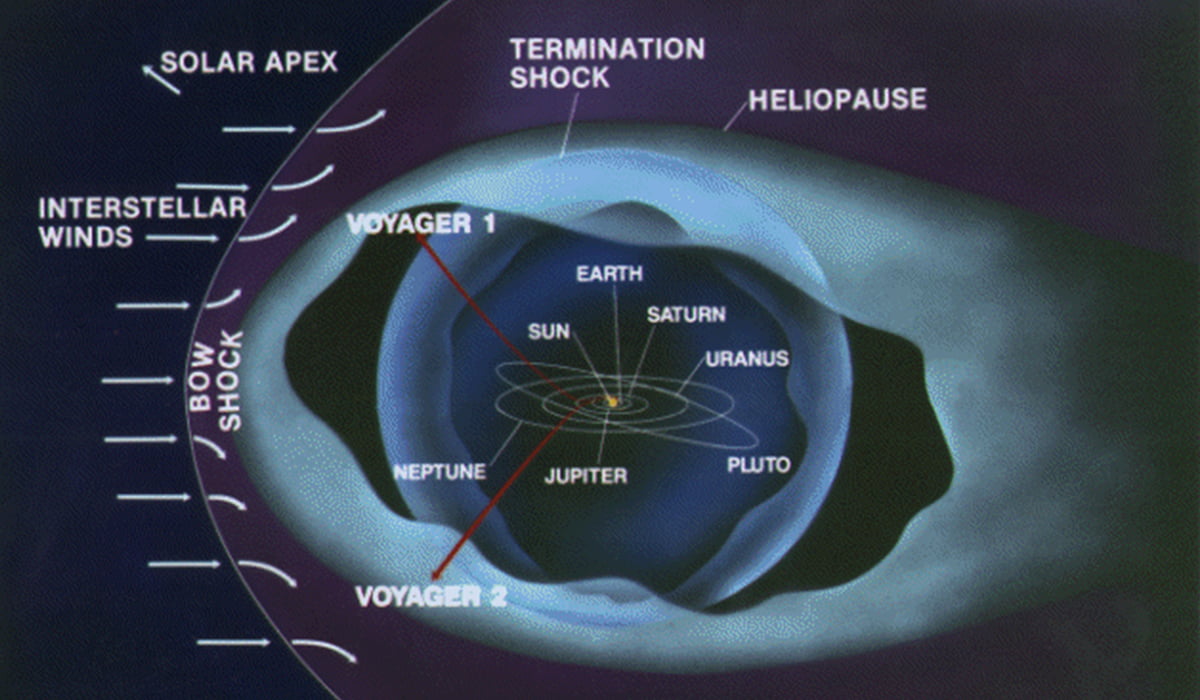The interstellar medium is what astrologists call the matter and radiation present between the star systems in a galaxy. Voyager 2 became the second man-made object to have entered interstellar space ever. Although its twin the Voyager 1 is already in the interstellar space, this probe will bring data in higher resolution. NASA made the announcement on Monday when the spacecraft finally stopped registering solar wind. As this happened, NASA scientists knew that it was completely out of the Sun’s influence and effectively, in interstellar space. NASA has previously planned to go to the moon and beyond.
Nicola Fox is the director of the Heliophysics Division at NASA. She sums up the excitement surrounding the Voyager 2 officially entering interstellar space.
“To have the Voyagers sending back information about the edge of the Sun’s influence gives us an unprecedented glimpse of truly uncharted territory.”
Historical Context
NASA launched Voyager 2 in 1977 to study outer planets. As the astrological term ‘outer planets’ refers to planets after the asteroid belt, Voyager 2 began its mission with Jupiter. Voyager 2 has a twin spacecraft, Voyager 1. Although NASA launched Voyager 1, 16 days after Voyager 2 in 1977, Voyager 1 made it to Jupiter first. Voyager 1 was able to do so because it had been set on a faster trajectory. Consequentially, the scientists put the Voyager 2 to a different mission towards Uranus and Neptune after both the twins visited Saturn and Jupiter.

The primary mission of Voyager 2 ended when it successfully visited Jupiter, Saturn, and Uranus in 1979, 1981 and 1986. It has therefore been operational for 41 years. Now, the Voyager 2 is in its extended mission of interstellar space. Throughout, the spacecraft has been in link with the scientists through the NASA Deep Space Network.
In astrological terms, a heliosphere is a cavity that the sun forms in an otherwise interstellar space. Voyager 2 has been foraging out of heliosphere in the second part of its space mission. After the spacecraft completed its early mission in 1986, the scientists working on it soon announced that it would now begin its interstellar mission. Scientists wanted to explore the solar system beyond the heliosphere. The data they receive from the Voyager 1 in interstellar space is crucial. Still, the data that Voyager 2 has the capacity to transmit is still impeccable.
The Breakthrough
NASA made the official announcement on Monday when the Voyager 2 crossed the heliosphere boundary. It is now officially traveling at a distance of 11 billion miles from earth. The reason why the world is hailing this as a massive scientific breakthrough is the data we are expecting to receive from the spacecraft.
Voyager 1 was the first spacecraft that crossed the heliosphere boundary into interstellar space in 2012. However, by the time it did so, its Plasma Science Experiment (PLS) instrument had already broken off. With the Voyager 2, it will finally be possible to receive real-time data from humanity’s most distant emissaries.
John Richardson is the principal investigator for the PLS instrument. He said in a press release:
“Working on Voyager makes me feel like an explorer, because everything we’re seeing is new. Even though Voyager 1 crossed the heliopause in 2012, it did so at a different place and a different time, and without the PLS data. So we’re seeing things that no one has seen before.”
With Voyager 1, the transition brought a rise in cosmic rays, but it could not detect a decrease in solar wind. Therefore, we saw a change in the charged particles but none in the magnetic field. However, with Voyager 2 on Monday, we finally saw the spacecraft detecting a drop in the solar wind until it vanished altogether.

Studying the solar wind transition has obviously been a trip for the scientists involved. However, we are still looking forward to the magnetic field transition.
Looking On
Other than the Plasma Science Experiment instrument, scientists are using a variety of instruments to have a better understanding of what the Voyager 2 is traveling through. The magnetometer, the low energy charged particle instrument, as well as the cosmic ray subsystem, are all vital. All three of these instruments are on board the Voyager 2. These can measure speed, temperature, pressure, and density.
However, the two spacecraft are relying on the radioactively decaying element. The scientists have shut down several of their instruments to stay within the power budget drop of 4 watts a year. Eventually, it will run out, and the spacecraft will lose connection with Earth. Their power is likely to run out by 2025.
The scientists and researchers at NASA have announced that they are hopefully launching a new mission in 2024. They will build this space mission around the observations they have received via the two Voyager spacecraft. They have already talked about how companies are now ready to enter space. The future can look like finally figuring out a way to break out of the solar system. Although the Voyager twins have left the heliosphere, they are still bound by the Oort Cloud. Oort Cloud acts as the arbitrary boundary to the solar system and has small objects influenced by the sun’s gravity. Scientists fear that it can take up to 30,000 years to fly out of the solar system.
Source: Fox News Network




Share Your Thoughts